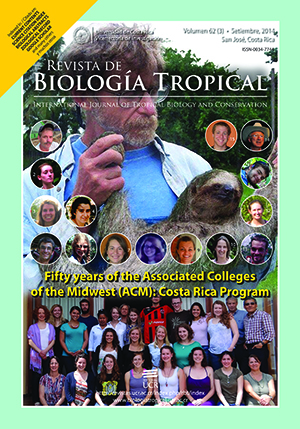Abstract
Copernicia and Washingtonia are two genera of the Trachycarpeae for which no subtribal classification has been proposed, mainly because of the lack of resolution in phylogenetic studies. Morphology and anatomy of flowers whithin Coryphoideae have proven useful for taxa delimitation and supporting relationships among their members. A description of the morphological and anatomical structure of flowers of C. tectorum and W. filifera is presented in order to explore reproductive characters that may clarify their classification within the subfamily and to contribute with floral biology studies. Flowers of cultivated specimens of both taxa and developing fruits of C. tectorum were fixed in FAA, dissected for morphological analysis, and parafin-embedded flowers and fruits were serially sectioned for obtaining permanent slides, using conventional techniques and safranin-fast green staining. All procedures were carried out in the Laboratory of Morpho-Anatomy, Agronomy Faculty of the Universidad Central de Venezuela (UCV). Both species have hermaphroditic flowers. C. tectorum flowers have a thick and pubescent perianth, six stamens with filaments forming a tube fused to the corolla, with rounded projections and an acute apex where the anthers are inserted. W. filifera flowers have an irregularly dentate calyx, and a shortly acuminate corolla, six stamens united by their filaments to the corolla which at the same time are briefly fused to the gynoecium. Cells with druse crystals in the staminal tube are reported for C. tectorum. Only one of the carpels of the gynoecium of C. tectorum develops at fruit stage, and a layer of abundant raphide cells forming a crustaceous endocarp in mature fruits, was found. W. filifera presents the perianth mesophyll with few layers of thick walled cells and schlerenchymatic tissue, gynoecium with apically fused carpels in the ventral region of ovary, free at the base and the apex of the style, where the ventral sutures are opened. C. tectorum has a ventral hypodermis in the petals made of large and thick walled cells, gynoecium with apically fused carpels in the ovary, free and adpressed basally, style-stigma completely fused, and stylar transmission channel absent distally. Distinct stylar canals in C. tectorum, united distally in W. filifera confirm the close relationship between these species and subtribe Livistoninae. Also, some floral morpho-anatomical similarities (e.g. fleshy calyx base and a hypodermis with thickened cell walls in petals) were found between C. tectorum and Pritchardia, supporting the affinities between both genera.##plugins.facebook.comentarios##

This work is licensed under a Creative Commons Attribution 4.0 International License.
Copyright (c) 2014 Revista de Biología Tropical
Downloads
Download data is not yet available.






